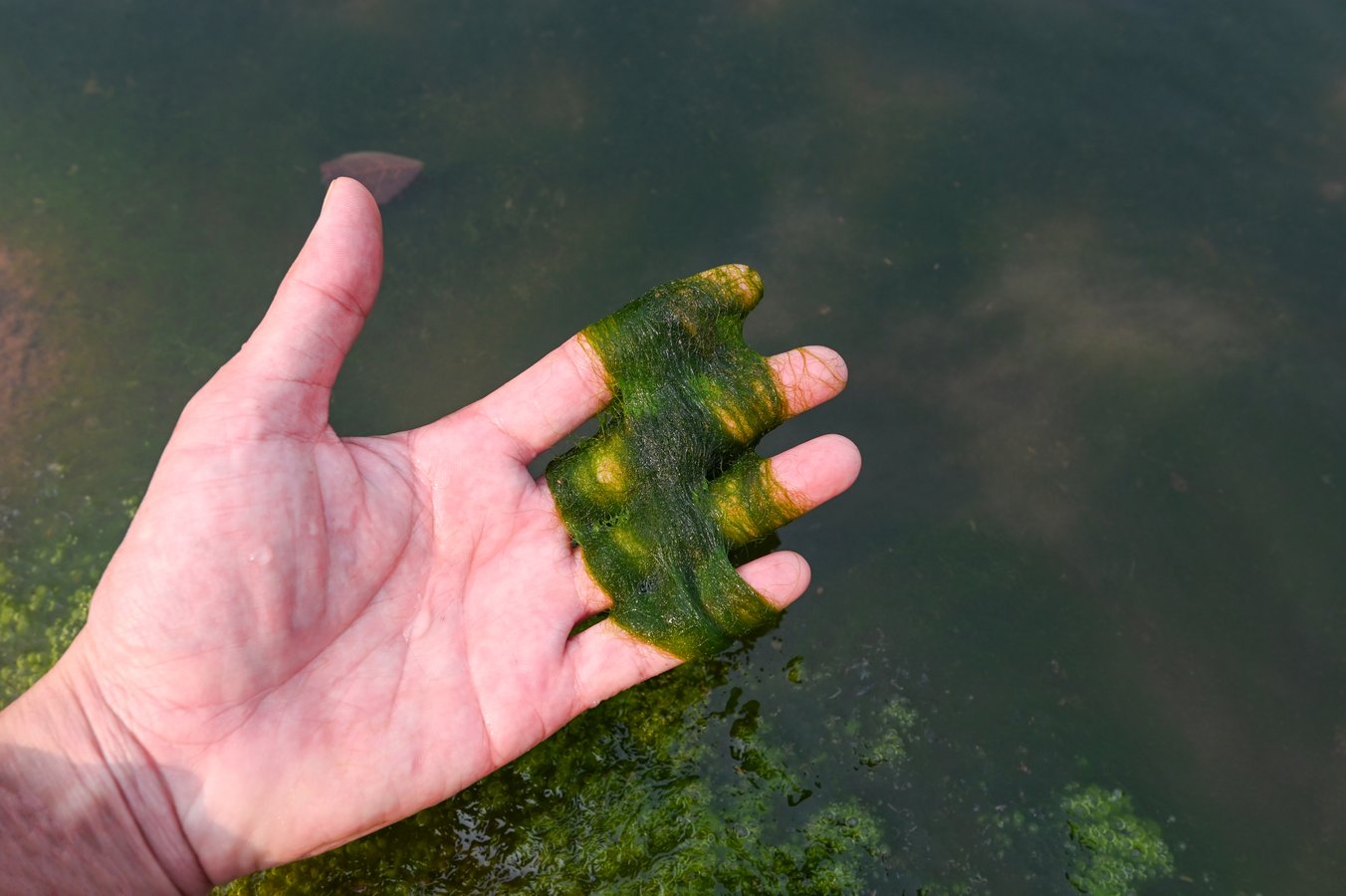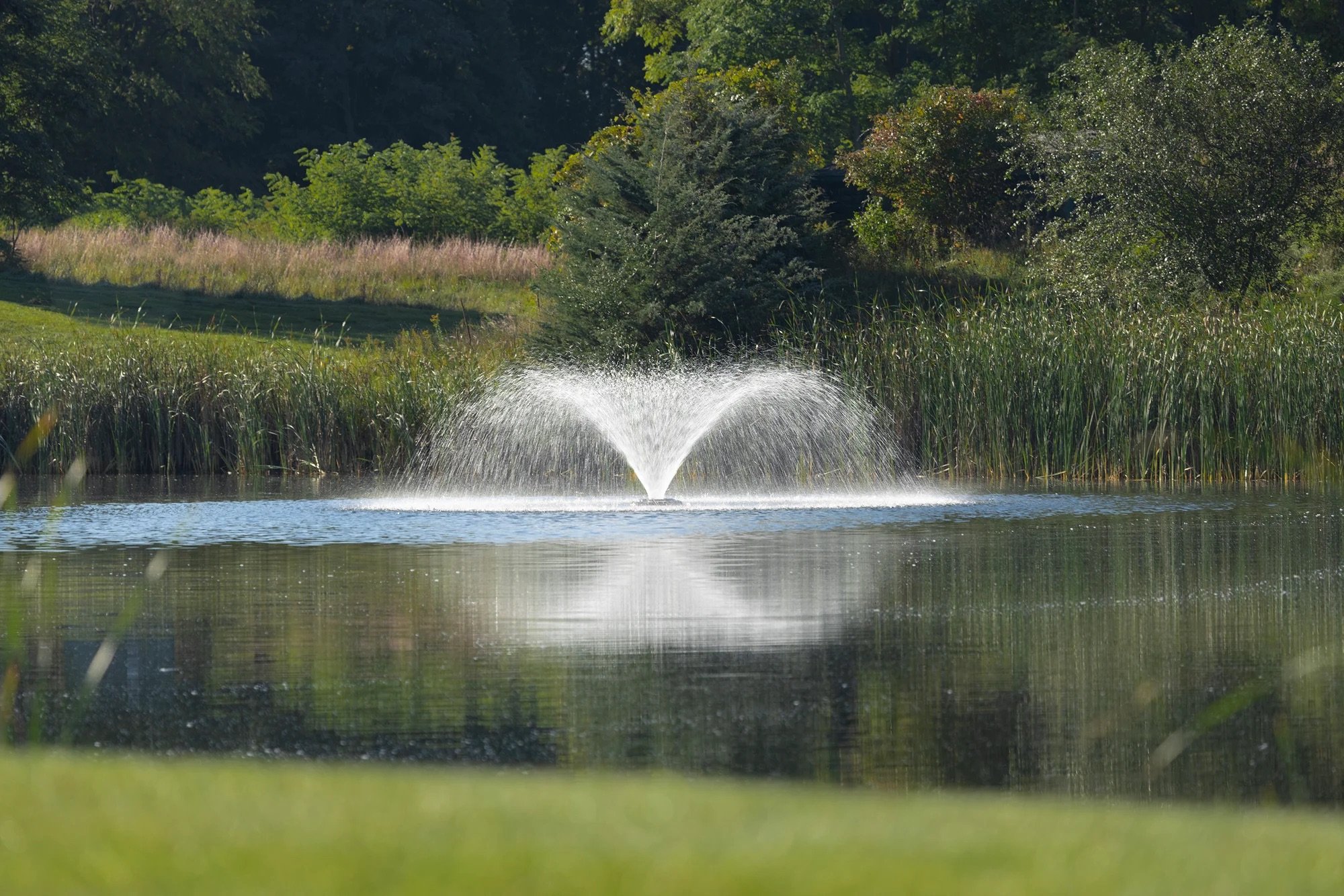
Algae are a normal and expected part of any freshwater ecosystem. In fact, many algae play a beneficial role—producing oxygen and supporting the aquatic food chain. But when excess nutrients like phosphorus or nitrogen enter the system, algae growth can quickly become excessive, turning your pond into a green, cloudy, or foul-smelling mess.
Not all algae are the same. Understanding which type is present is the first step toward effective, environmentally responsible management. Whether your focus is on water quality, appearance, or ecological balance, identifying the algae type helps guide the right treatment strategy.
Planktonic Algae (Free-Floating Algae)These microscopic algae live suspended in the water column and often give ponds a green or cloudy look. Some species are harmless, while others can form dense blooms that affect clarity and health.
Management Tips:
- Minimize nutrient runoff (especially phosphorus) by avoiding fertilizer applications to close to the shorelines.
- Plant native shoreline vegetation to help filter nutrients before they enter the water.
- Apply phosphorus-binding products to reduce internal nutrient loads.
- Use professionally applied algaecides only when necessary, and follow up with aeration or biological treatments to prevent oxygen depletion.
Filamentous algae grow in long strands and often float in mats on the surface. They thrive in shallow, nutrient-rich water and can quickly become a nuisance.
Management Tips:
- Manually remove mats with a skimmer or rake to prevent nutrient recycling.
- Use diffused aeration to improve water movement and oxygen levels.
- Apply beneficial bacteria to break down bottom muck and reduce nutrients.
- Treat dense mats with a professional algaecide application, paired with long-term nutrient and circulation improvements.
These bacteria function like algae and are often the culprits behind harmful algal blooms (HABs). Some strains produce toxins that can harm people, pets, and wildlife.
Management Tips:
- Prevent nutrient loading from fertilizers, livestock runoff, and septic systems.
- Use aeration to minimize stagnant zones where HABs thrive.
- Apply phosphorus-binding agents to lock up nutrients in water and sediment.
- Only treat with algaecides under licensed professional supervision, especially when copper-based products are involved. Proper strain identification is critical and cannot be done without a lab test.





Algae Identification and Monitoring
Knowing what type of algae you're dealing with helps guide treatment:
- Observe color, location (floating, submerged, or attached), and texture.
- Conduct water testing for nutrients and oxygen levels.
- Perform seasonal monitoring to catch issues before they escalate.
A Preventative Approach to Algae Management
Algae are a natural part of pond life—but overgrowth typically signals a nutrient imbalance. While algaecides applied by professionals can be effective, they are just one part of a broader solution.
At Water & Wetland, we believe the most effective way to manage algae is through proactive, preventative pond and lake care. Regular water testing, nutrient reduction, and aeration create a more balanced aquatic environment—minimizing the need for reactive treatments and keeping your pond clearer, healthier, and more enjoyable all year.
Contact us today for a consultation or to request a customized management plan.
About Water & Wetland, A Jones Lake Management Partner
Water & Wetland is a trusted expert in lake, pond, and wetland management, providing innovative and environmentally responsible solutions to control invasive species, restore shorelines, and improve water quality. As a Jones Lake Management Partner, we serve HOAs, golf courses, municipalities, and private landowners with customized lake and pond management plans designed to promote long-term ecological health. We understand the importance of proper permitting and regulatory compliance, ensuring that all projects meet local, state, and federal environmental standards. With a commitment to sustainability and science-based practices, Water & Wetland helps clients maintain thriving, well-balanced waterbodies
